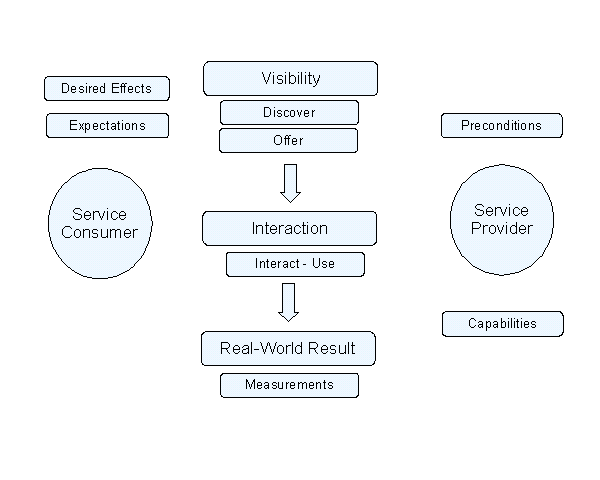Phases in the Life of an SOA Service
The three phases in the life of an SOA service are:
Visibility
The term visibility denotes the mechanism whereby a potential consumer finds a service provider.
Visibility is promoted through the service description which contains the information necessary to interact with the service and describes this in such terms as the service inputs, outputs, and associated semantics.
Interaction
"Interaction is the activity of using a capability. Typically mediated by the exchange of messages, an interaction proceeds through a series of information exchanges and invoked actions".
"At its core, an interaction is 'an act' as opposed to 'an object' and the result of an interaction is an effect (or a set/series of effects). This effect may be the return of information or the change in the state of entities (known or unknown) that are involved in the interaction".
Real-World Effect
Both the service consumer and provider are trying to achieve a result of some sort. The 'real-world effect' is the change effected by the service provider on behalf of the consumer.
There is always a particular purpose associated with interacting with a service. Conversely, a service provider (and consumer) often has priori conditions that apply to its interactions. The purpose of using a capability is to realize one or more real world effects.
The following illustrates the basic concepts and entities discussed so far. It is a very simplified view. For instance, both the Service Consumer and Provider may have preconditions, although the diagram only shows the more common and expectable circumstance of the provider having preconditions.

